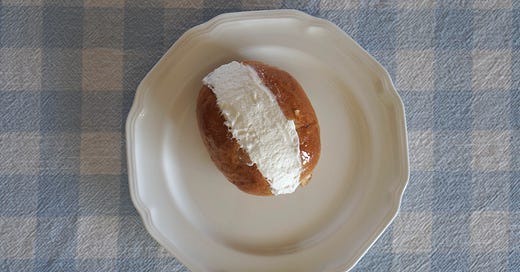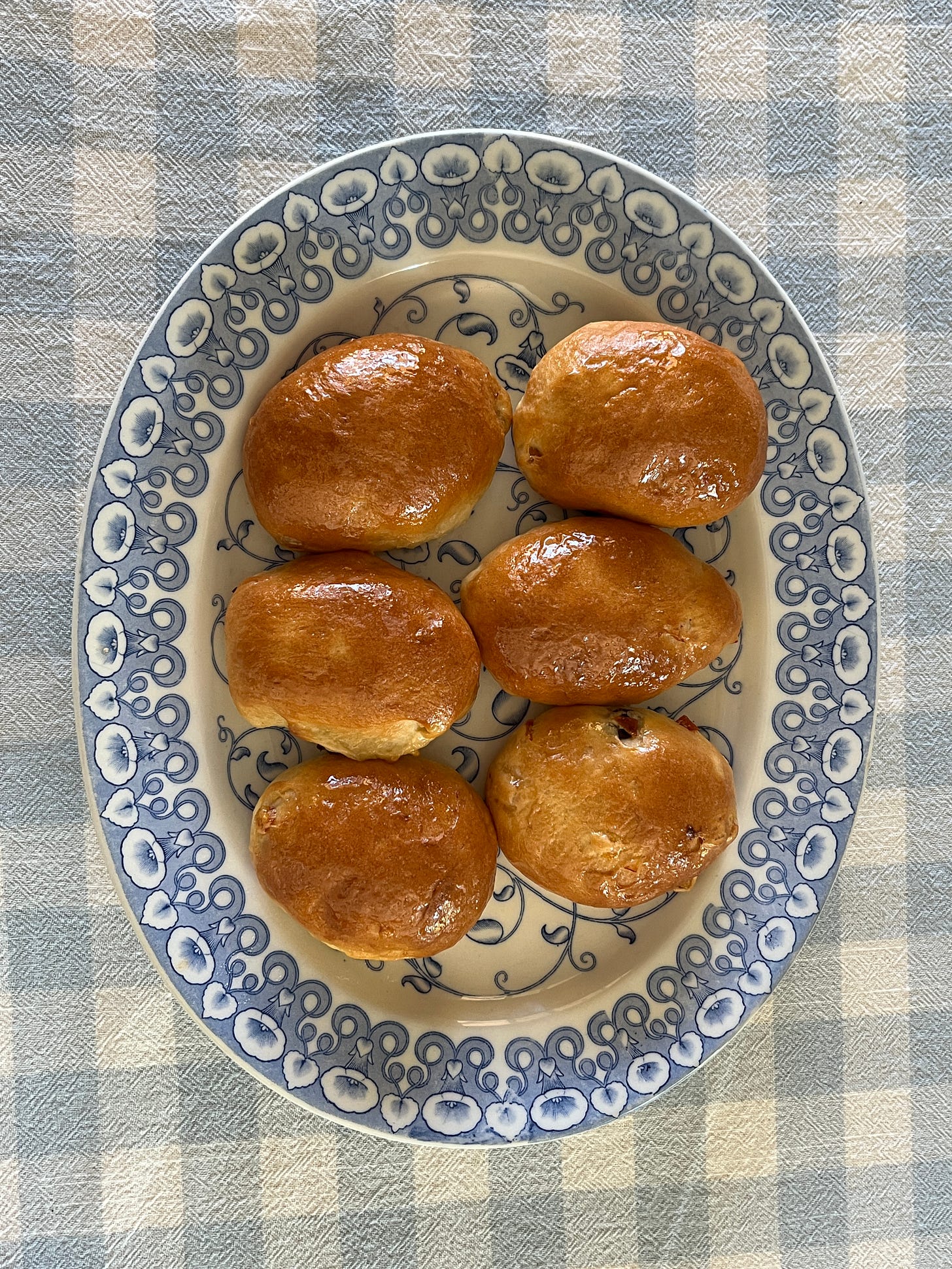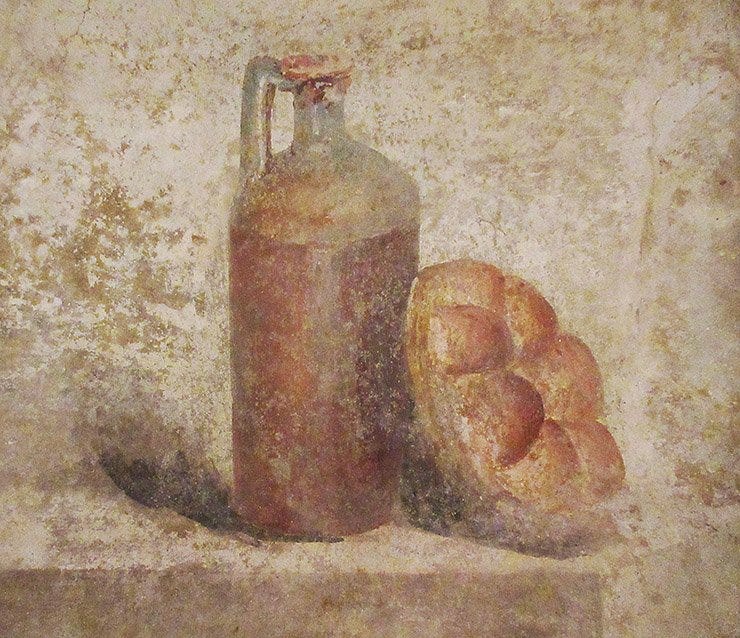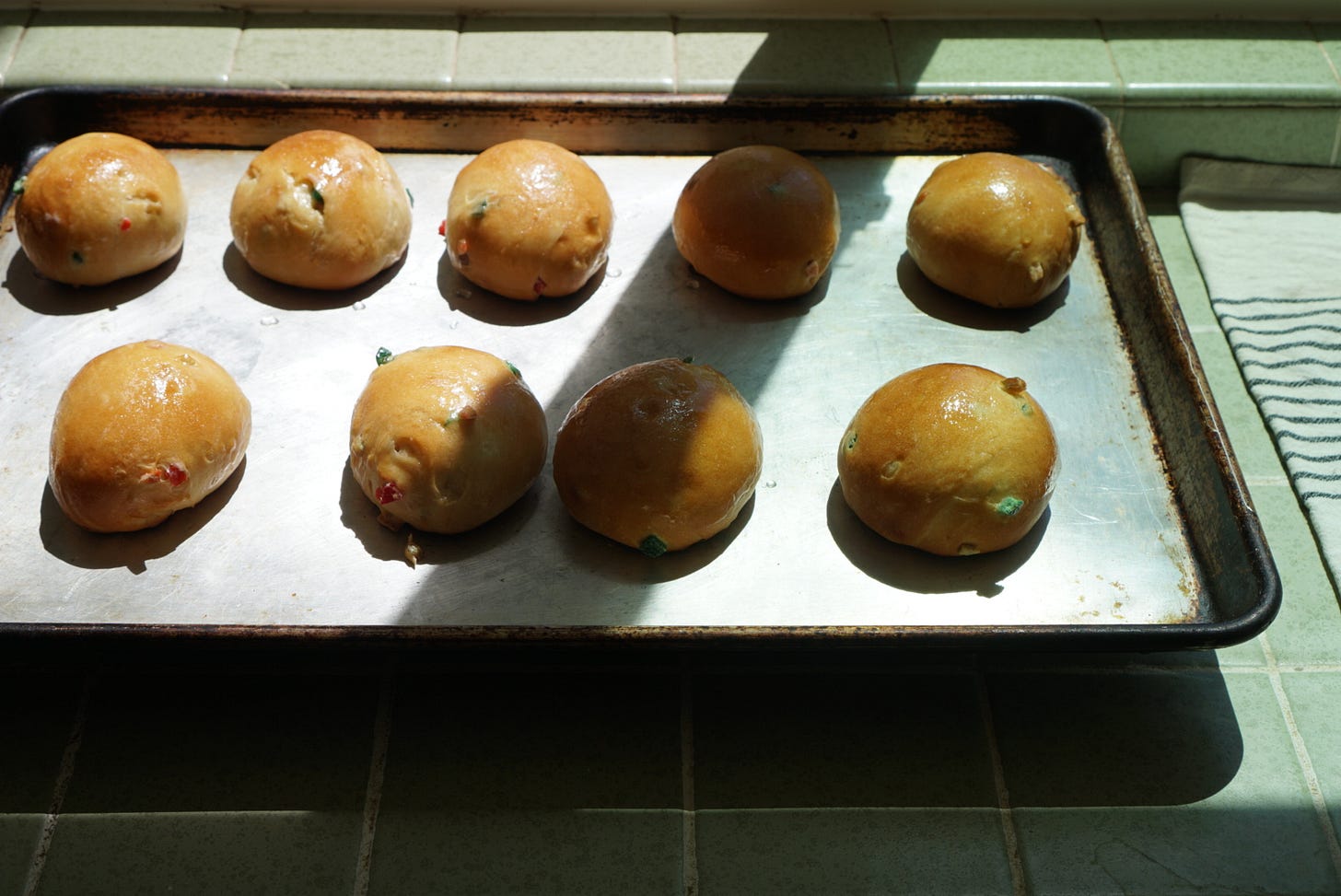Welcome to mamaeats, a twice-weekly newsletter (Tues. & Sat.) inspired by a slow + seasonal home life. I’m a mother of three, avid reader, gardener, and home cook who focuses on nourishing, whole food meals with a focus on plants. This newsletter is my labor of love—if you are not already, and are able to do so, please consider becoming a subscriber to support my work here, which takes time and effort. Doing so gives you access to all the archives and recipes (find the recipe index here) and my e-cookbook, as well as cook-along videos which go along with most recipes. If a recurring payment is too much for you right now, but you’d still like to contribute, I’d be delighted to receive a one-off tip via my ko-fi. As always, thank you for being here, reading this newsletter, and sending me your thoughts.
I mentioned making maritozzi in a past “a week of meals” newsletter and one of you asked for the recipe, so here I am sharing it today. It’s a recipe that is near to my heart and tinged with nostalgia— I first tasted a maritozzo (an oval brioche type bun glazed with sticky syrup, split and filled with whipped cream) on a trip to visit cousins in Rome when I was 16. It is a traditional Roman pastry, even on the list for Lazio of prodotto agroalimentare tradizionale, protected traditional foods of a specific geographic origin. You may be thinking that it is overindulgent or dense, but in fact it is not, even in the morning—traditionally maritozzi used to be a popular breakfast choice in Rome during the 1950s and 60s before the cornetto (an Italian type of croissant) became ubiquitous. The bun itself is airy and lightly sweetened, and the whipped cream is either unsweetened or lightly sweetened, making the whole thing perfect, especially alongside an espresso, and not at all cloying or heavy.
There’s quite a romantic history behind it, actually: the bun itself is a variation on an ancient Roman bread loaf enriched with eggs and oil, sweetened with honey and raisins which wives used to make their husbands to sustain them through the labor of a workday in the fields. Quick to eat and dense in calories, it enabled them to work all day without needing to return home for lunch. In the Middle Ages, these sweetened breads became smaller and enriched with candied peel and pine nuts (quaresimali), and were the “only sin of gluttony one could indulge in during Lent.”1, since they were made with oil instead of animal fat. This made them quite popular, as you can imagine,— ‘during lent you see everybody eating maritozzi in the Caffetteria day and night as if they never had eaten before.’2
Later on, young men would conceal a ring or gold trinket inside the maritozzo and gift it to their sweetheart on the first Friday in March (marito means husband in Italian, maritozzo became a term to jokingly refer to a ‘half-husband’) as a sort of valentine, often decorated with intricate designs of pierced or interwoven hearts or two hands clasped together in the sugared top. After the second world war, maritozzi began to be split and filled with cream.
Carla Tomasi, an incredibly talented and lovely Italian woman who I met through Instagram and admired very much, generously sent me this recipe of hers when I asked her if she had ever made maritozzi without eggs. Sadly, Carla has since passed away, but every time I make maritozzi and the other recipes she so generously shared, I think of her. My cooking and gardening has been greatly influenced by hers, which was incredibly skilled while also being simple, beautiful, and honest. Thank you, Carla.
Carla’s maritozzi
notes: This recipe was shared from Carla Tomasi to me via email in 2020, with a few small edits—I use olive oil instead of vegetable oil, and I’ve left out her suggested addition of 1/2 tsp cinnamon. I don’t always have bread flour on hand, and can attest that it is still very delicious with only all-purpose flour (I use Central Milling Co.) I use regular ‘active dry yeast’ (Red Star, which comes in a large bag at Costco that I store in the fridge). Leave out the raisins and candied orange peel if you wish for a plain bun, or alternatively, also add a tablespoon of pine nuts. Sometimes I also make them with candied mixed fruit, to use up any leftover from Christmas. I sometimes like adding a bit of amaretto to the dough along with the candied fruit, although not traditional.







